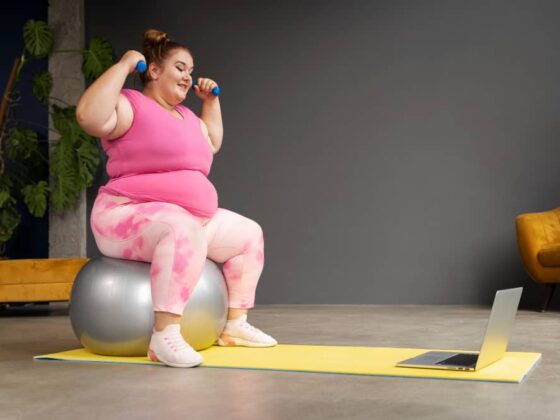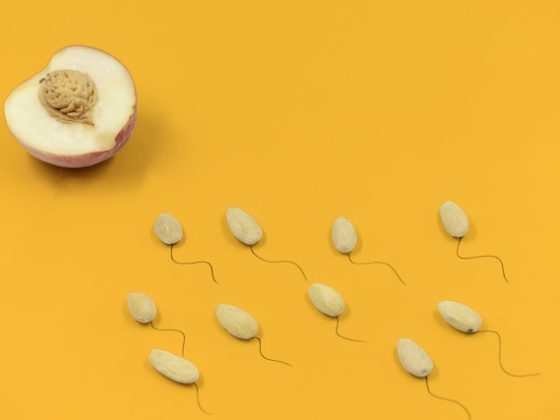Hey there! This post may contain affiliate links. As an Amazon Associate, I earn a teensy commission from qualifying purchases when you buy through these links (at no additional cost to you). For more info, please check the full disclaimer.
Many women experience serious osteoporosis bone accidents in winters or rains than in any other season. In severe cases, the destruction can last for years! This article will share amazing tips to help you reduce the risk of osteoporosis fractures.
If you live in a cold or wet climate, you might be aware of this problem. Extreme snow and rainfall often cause roads to become extra slippery. So, the risk of falling and breaking a bone is definitely high in winters.
And that’s also not the ONLY reason!
Sometimes, all the extra clothing you wear to keep safe from chills can increase the risk of falling because of posture imbalance.
Studies tell the same story.
According to research, every 1 in 2 women has osteoporosis fracture at least once in their life.
And here’s something even scarier — in 2005 alone, about 1.45 million women aged 50+ years had serious bone fractures!!
So the best way to avoid life-threatening osteoporosis fractures is prevention.
In this article, I’ll share some amazing tips to reduce your risk of osteoporosis fractures in winters & wet seasons.
- What Causes Osteoporosis?
- What are the Risk Factors for Osteoporosis?
- What are the Common Sites of Osteoporosis Fractures?
- How Do You Know if You Have Osteoporotic Bones?
- How Serious Can Osteoporosis Fractures Be?
- 12 Amazing Tips to Reduce Osteoporosis Fractures
- 1. Diminish your risk factors
- 2. Increase your intake of Calcium and Vitamin D
- 3. Avoid walking on dangerous surfaces
- 4. Sprinkle rock salt as you walk
- 5. Decrease risk of falling
- 6. Avoid going out & use online services
- 7. Start exercises or fitness regimes
- 8. Wear protective gear for bones
- 9. Try balance training
- 10. Refrain from alcohol consumption
- 11. Stop smoking
- 12. Test your BMD Score
What Causes Osteoporosis?
Osteoporosis is a debilitating disease that weakens your bones. It’s more common in older women.
Over the years as you age, you might automatically lose bone density. This is often because you’re not producing new bone matter and/or the existing cells are dissolving. If both occur at the same time, the osteoporosis effects would be much faster and severe.
With the continuous decrease in bone density, they’ll become fragile, porous, and quite brittle. So much so that even a minor bump can easily crack it.

As you already know, bones are made of calcium. So your body needs ample calcium to deposit in the bones.
However, if you’re not getting enough calcium per your body’s requirement, your body starts to absorb it from other bones to maintain normal cell functioning.
Eventually, this will decreases bone density to the extent that they crumble and become prone to osteoporosis fractures.
What are the Risk Factors for Osteoporosis?
If you want to avoid the consequences of osteoporosis fractures, you’ll need to know about the osteoporosis risk factors as well. These habits might be the reason behind your fragile bones:
- Less calcium intake:
Insufficient calcium intake puts you at the target of early-onset osteoporosis onset. Make sure you’re getting enough Vitamin D and other necessary bone nutrients.
- Aging female:
Yep, believe it or not being a woman doesn’t do us any favors when it comes to bone diseases.
Research shows that more females have osteoporosis than males. This is partly because of menopause (after 40 years) which causes a serious shortage of estrogen hormone.
Less estrogen means faster calcium depletion from bones. Ultimately, you might experience osteoporosis fractures.
- Unhealthy habits:
Smoking, alcohol, and caffeine consumption also contribute to an increased risk of osteoporosis.
- Gut health:
If your gut plays the devil and doesn’t absorb sufficient nutrients, the bones will start to lose their mass and density. For eg in the case of Celiac disease.
- Vitamin D deficiency:
Vitamin D helps your intestines absorb calcium. If you have low Vitamin D, all the calcium you took will leave your body. Then the calcium will be absorbed from the bones. To avoid this, ensure ample Vitamin D intake from your 20s.
- Diseases:
Some health conditions can also make you prone to severe osteoporosis fractures, such as rheumatoid arthritis, liver infections, hepatitis C or hyperthyroidism.
What are the Common Sites of Osteoporosis Fractures?

The most common osteoporosis fracture site is the hip joint and spine.
The ball-and-socket joint of the pelvis is supported by a thin femur bone. Because it’s already fragile, you’re at a high risk of breaking it upon impact.
Additionally, osteoporosis fractures also affect the wrist, spine, and forearm. For these, just a low-impact force is enough to crack them. This is why these are also called fragility fractures.
The worst part is that these fractures from osteoporosis can occur anytime — even while doing daily life chores!
How Do You Know if You Have Osteoporotic Bones?
Osteoporosis is a silent bone disorder and only shows symptoms after the damage is done. You can never feel if your body is running low on calcium because it’s being fulfilled from the bone reservoirs.
So now that you know what the risk factors for osteoporosis are, let’s take a look at some of the major symptoms of osteoporosis:
- Frequent osteoporosis fractures
- Weak grip
- Backaches
- Brittle nails
- Sudden weight loss
- Stooped posture
- Pain in fingers or knees
How Serious Can Osteoporosis Fractures Be?
Osteoporosis with fracture risk is a nightmare of its own. Even the mere symptoms of this bone disease can be unbearable!
Having a broken bone is no pleasant experience. Bones take about 6-12 weeks to heal completely. And as you get older, it gets even tougher.
The osteoporosis fracture at the hip joint is the most serious of all. It can put the patient in danger of early death because of permanent or long-lasting disability. You’ll become dependent on others.
Thus, considering the severity of osteoporosis fractures, it’s better to learn what the risk factors of osteoporosis are and how you can avoid them.
12 Amazing Tips to Reduce Osteoporosis Fractures

To avoid osteoporosis fractures in any season but particularly in winters or rainfall, you don’t have to shut yourself inside your home. There’s much you can do to dodge osteoporosis fracture risk factors.
Check out these super useful tips:
1. Diminish your risk factors
To reduce the risk of osteoporosis fractures, it’s important to know about the risk factors first.
For example, after you’ve entered your 40s, menopause or low estrogen levels can lead to an increased danger of fractures from osteoporosis. For this, you can always start estrogen replacement therapy to fulfill the missing estrogen requirement.
Similarly, the older you grow, the more you become prone to falls or imbalance problems. Take proper preventive measures to avoid these issues. This will eventually lessen one of the major risk factors for osteoporosis fractures.
2. Increase your intake of Calcium and Vitamin D
The number one way to avoid an osteoporosis fracture is to avoid weak bones.
You can start by taking an adequate amount of calcium and Vitamin D daily. By this, I mean getting the required amount of dose according to your age group.
The recommended daily intake of calcium for women aged 50 years or less is 1000 mg while for those who’re older it’s 1200 mg.
On the other hand, you need about 10-20 mcg of Vitamin D every day.
You can regulate this amount per your diet. Add sufficient food sources rich in Vitamin D, such as milk, cheese, yogurt, and soy milk to prevent Vitamin D deficiency. Also eat more oily fish, egg yolk, and red meat.
Read More: 27 Best Foods Rich in Vitamin B12
3. Avoid walking on dangerous surfaces
Seen a wet slippery road? Came across a sloped area? Trash or leaves on a sidewalk? Steer clear from such zones!
Avoid taking risks when it comes to your bones. Choose a different path or seek assistance while walking on such pathways. If you have to walk on a particularly slippery floor made of tiles, make sure you have some support to lean on.
I’d recommend walking on paths with some kind of friction-friendly design or carpeting to reduce falls and prevent osteoporosis fractures.
4. Sprinkle rock salt as you walk
The best way you can avoid tripping on snow or any slippery surface is by carrying salt in a small bag. Sprinkle it on the road or sidewalks that look scary and scream future risk of osteoporosis fractures.
5. Decrease risk of falling
Do you already have a chronic bone disease, are menopausal, or know any elderly who’s at risk? Then you should take extra precautions in winters or on a rainy day to prevent osteoporosis fractures from falls.
Here are some preventative measures you could take:
- Wear non-slippery shoes, sandals, or slippers to have a better grip on the ground.
- Avoid wearing heels as they can mess up your balance.
- If you face any difficulty while walking, carry a stick for support.
- Use bed rails for the elderly to help them get in or out of bed or avoid falling.
- Do not wear super loose clothes as it increases the chances of tripping.
6. Avoid going out & use online services
If you’re at high risk of getting fractures from osteoporosis, find companies for grocery, apparel, foods, or even hospital trips that offer online services. This could help you especially if there’s no one to accompany you when you go out.
7. Start exercises or fitness regimes
Regular exercise strengthens the bone tissue and lowers the absorption of calcium from random bones. This prevents the early onset of osteoporosis.
Weight-bearing gym exercises or even walking, cycling, swimming, etc., increase bone density. This healthy activity protects your bones from osteoporosis.
Read More: 7-Minute Abs Exercises for Total Beginners
8. Wear protective gear for bones
I’d also recommend investing in some durable & affordable protectors for hips, wrists, or arms, especially if you’re going out alone during snowfall season. This way, even if you fall, there won’t be any lasting damage or serious osteoporosis fractures.
9. Try balance training
Certain balance training techniques have proven to be effective for preventing osteoporosis fractures. This includes yoga and particularly, Tai Chi.
If you want to increase your bone density naturally, the perfect way to do this is through yoga. A study in 2009 proved yoga to help increase bone mineral density.
Some researchers even say that a daily 12-minute yoga poses routine can significantly improve your bone strength against osteoporosis fractures.
Read More: 3-Minute Daily Morning Yoga Routine for Beginners
Tai Chi prevents the decrease in bone density. This type of balance training can reduce the dangers of bone brittleness and subsequently, fractures from osteoporosis.
Additionally, both are necessary for flexibility and posture balance. You can also mitigate fall-risk remarkably through balance training techniques.
So go on and wear your yoga pants and get started!
10. Refrain from alcohol consumption
Goes without saying but cut down your alcohol, hon! YES, even during the cold winter season by the warm crackling fire.
If you’re a heavy drinker, you might unknowingly be putting yourself in danger of serious accidents from osteoporosis fractures.
Research says that alcohol is a significant contributing risk factor for osteoporosis fractures in hips and joints. It can weaken your bones to the core and make them prone to cracks.
So my advice is to either ditch drinking entirely or limit your consumption to keep you safe.
11. Stop smoking
Smoking is a notorious habit. It’s among the leading causes of most chronic diseases including osteoporosis. Avoid smoking cigarettes altogether – even when you feel super chilly – if you want to avoid osteoporosis fractures.
12. Test your BMD Score
Bone Mineral Density (BMD) test measures the amount of calcium and other necessary minerals in the bones.
It’s an X-ray examining the content of your bones. BMD score shows if you’re at risk of osteoporosis fractures or not. Usually, a doctor would recommend getting this test done.
I hope these useful tricks will prove helpful in avoiding osteoporosis fractures risk factors during winter or rainy seasons.
Do you happen to know any other ways to prevent severe bone crack accidents? Share with me in the comments below.
References:
- https://www.fracturedtruths.com/osteoporosis-fracture-facts
- https://www.ehstoday.com/health/article/21908613/winter-weather-presents-osteoporosis-and-foot-and-ankle-fracture-danger-for-older-workers
- https://www.foothealthfacts.org/conditions/bone-healing
- https://www.ncbi.nlm.nih.gov/pmc/articles/PMC4851231/
- https://stanfordhealthcare.org/medical-conditions/back-neck-and-spine/osteoporotic-fractures
- https://www.webmd.com/osteoporosis/guide/bone-mineral-density









1 comment
Thank you so much for this information.